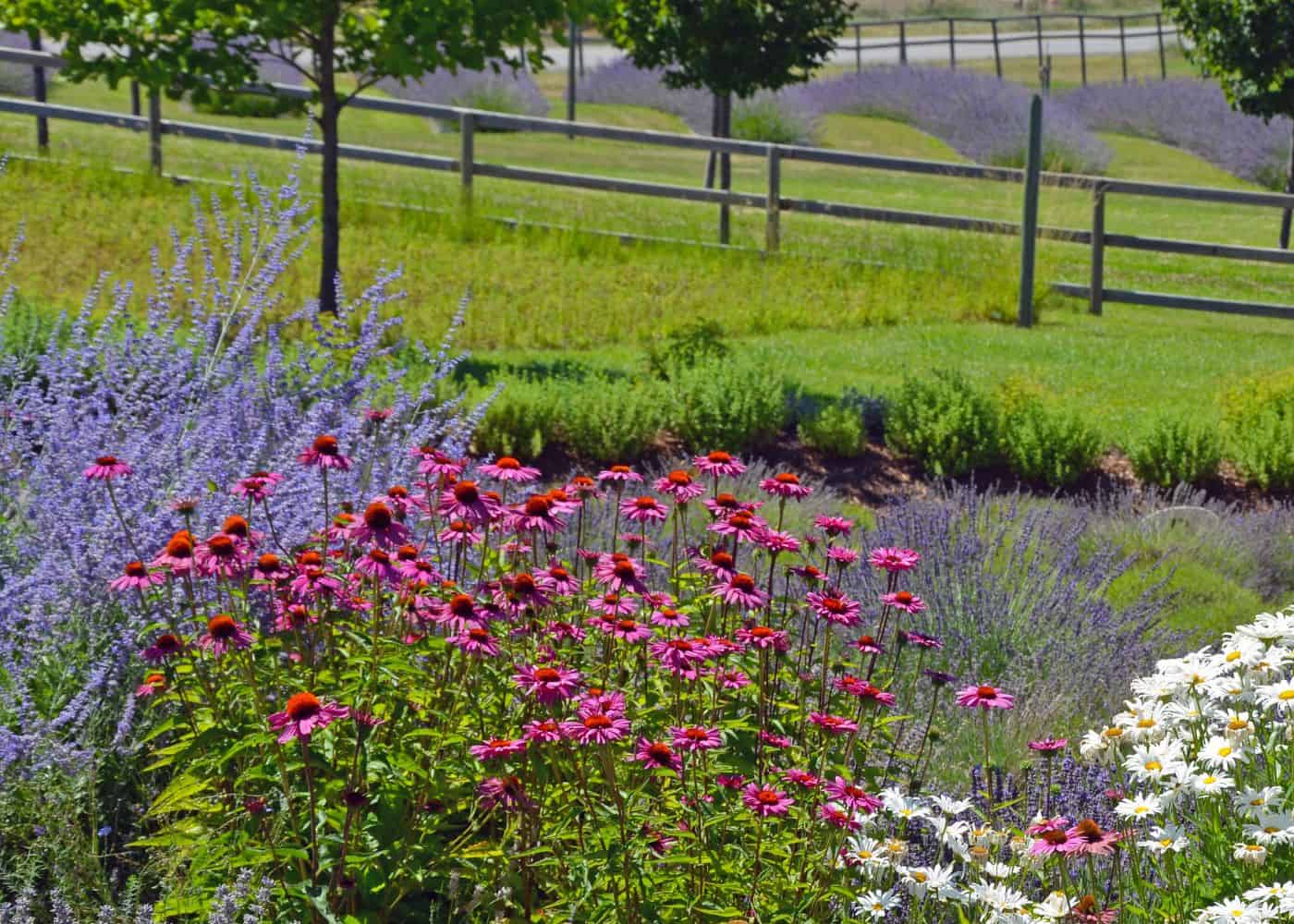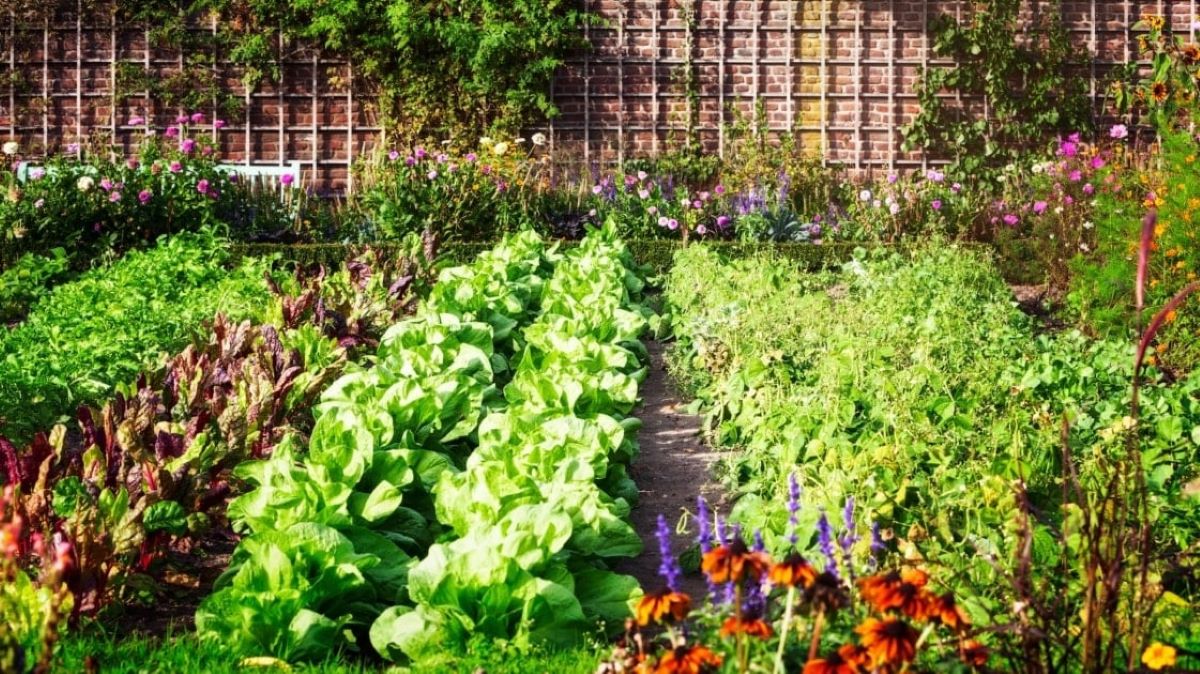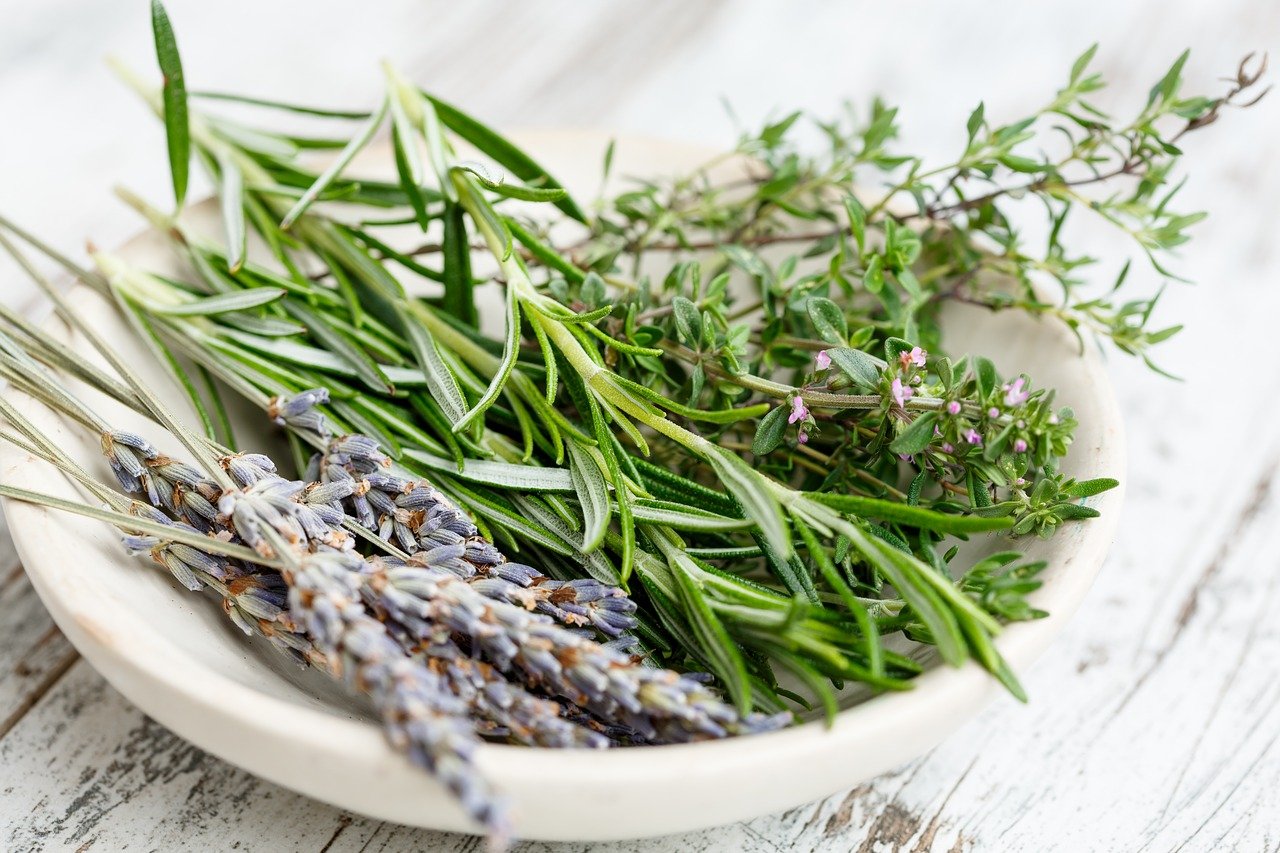Home>Garden Design>Garden Styles>What Shrubs Look Good Together


Garden Styles
What Shrubs Look Good Together
Modified: February 7, 2024
Discover the perfect combination of shrubs for your garden styles. Explore our comprehensive guide on what shrubs look good together and create a stunning landscape.
(Many of the links in this article redirect to a specific reviewed product. Your purchase of these products through affiliate links helps to generate commission for Chicagolandgardening.com, at no extra cost. Learn more)
Table of Contents
- Introduction
- Factors to Consider When Choosing Shrubs to Plant Together
- Complementary Colors and Blooming Seasons
- Planting Shrubs with Varying Textures and Leaf Shapes
- Creating Visual Interest with Varied Heights and Forms
- Mixing Shrubs with Different Sunlight and Soil Requirements
- Combining Shrubs with Harmonizing Foliage Colors
- Arranging Shrubs to Enhance the Overall Landscape Design
- Conclusion
Introduction
When it comes to creating a beautiful garden, one of the key elements to consider is the arrangement of shrubs. By carefully selecting and pairing different shrubs together, you can create stunning combinations that add depth, texture, and visual interest to your landscape.
Choosing the right shrubs to plant together can be a challenging task, as there are various factors to take into consideration. This article will guide you through the process of selecting shrubs that not only look good together but also thrive in harmony.
By considering factors such as complementary colors, blooming seasons, textures, leaf shapes, heights, forms, sunlight requirements, soil preferences, and foliage colors, you can create a well-designed garden that is pleasing to the eye.
Whether you’re a beginner or an experienced gardener, this article will provide you with valuable insights and tips on pairing shrubs to achieve a cohesive and visually appealing garden design.
So, let’s dive in and discover the art of combining shrubs to create stunning garden displays!
Factors to Consider When Choosing Shrubs to Plant Together
Before deciding on the shrubs to plant together, there are several important factors to take into consideration:
- Complementary Colors and Blooming Seasons: When selecting shrubs, consider their flower colors and blooming seasons. Choose shrubs that have complementary colors or ones that bloom at different times throughout the year to ensure continuous color and visual interest in your garden.
- Textures and Leaf Shapes: Mixing shrubs with varying textures and leaf shapes can add depth and visual contrast to your garden. Pair shrubs with smooth, glossy leaves with those that have coarse, textured foliage to create an eye-catching combination.
- Varied Heights and Forms: To create a visually appealing garden, it’s important to incorporate shrubs of different heights and forms. Taller shrubs can provide a backdrop for shorter ones, while spreading or weeping shrubs can add a graceful touch to the overall landscape.
- Sunlight and Soil Requirements: Some shrubs thrive in full sun, while others prefer shaded areas. It’s crucial to consider the sunlight requirements of each shrub when deciding on their placement. Additionally, take into account the soil pH and moisture preferences of the shrubs to ensure they will thrive in their designated locations.
- Harmonizing Foliage Colors: Consider the foliage colors of the shrubs when choosing plants to pair together. Opt for shrubs with foliage tones that harmonize or provide a contrasting backdrop for each other, creating a visually captivating garden.
By carefully considering these factors, you can create a harmonious and visually stunning garden design. Take the time to research and plan accordingly to ensure that each shrub complements and enhances the overall composition.
Complementary Colors and Blooming Seasons
One of the most visually striking aspects of a garden is the color scheme. When selecting shrubs to plant together, it’s essential to consider their complementary colors and blooming seasons. This will ensure a harmonious and visually appealing display throughout the year.
Complementary colors are those that are opposite to each other on the color wheel. Pairing shrubs with complementary colors creates a vibrant and eye-catching contrast. For example, pairing yellow-flowering shrubs with purple-flowering varieties can create a stunning visual impact.
Additionally, consider the blooming seasons of the shrubs. By selecting plants that bloom at different times of the year, you can maintain continuous color in your garden. A combination of early, mid, and late-season bloomers will provide a varied and captivating display throughout the seasons.
When choosing shrubs based on their blooming seasons, it’s a good idea to research and select varieties that have a long flowering period. This will ensure that your garden remains vibrant and filled with blooms for an extended period.
Furthermore, consider the color harmony within each season. If you prefer a more cohesive and subtle color palette, choose shrubs with similar shades and tones. For example, pairing soft pink and lavender-colored shrubs can create a soothing and serene ambiance.
On the other hand, if you prefer a bold and vibrant garden, combine shrubs with contrasting colors to create a dramatic effect. Mixing red and orange-flowering shrubs can result in a striking and attention-grabbing display.
Remember to also consider the foliage colors of the shrubs, as they contribute to the overall aesthetic. Some shrubs have foliage that changes color in different seasons, adding an extra layer of visual interest to your garden.
By carefully selecting shrubs with complementary colors and blooming seasons, you can create a garden that is bursting with vibrant hues and captivating displays throughout the year.
Planting Shrubs with Varying Textures and Leaf Shapes
A visually appealing garden is one that incorporates a variety of textures and leaf shapes. By planting shrubs with varying textures and leaf shapes, you can add depth, contrast, and visual interest to your landscape design.
When selecting shrubs, consider the texture of their foliage. Some shrubs have smooth and glossy leaves, while others have rough, textured foliage. By mixing these different textures, you can create a visually captivating display.
Pairing shrubs with coarse, textured leaves with those that have smooth, glossy foliage can create a pleasing contrast. For example, the bold, large leaves of a hosta plant can beautifully juxtapose the fine, delicate leaves of a fern.
In addition to texture, consider the shape of the leaves. Shrubs with different leaf shapes can also contribute to the overall visual appeal of your garden. For instance, the spiky, pointed leaves of an ornamental grass can contrast beautifully with the broad, heart-shaped leaves of a hydrangea.
Furthermore, consider the growth habit of the shrubs. Some shrubs have erect, upright growth patterns, while others may have a more cascading or weeping form. By combining shrubs with varying growth habits, you can create an interesting and dynamic landscape.
When arranging shrubs with different textures and leaf shapes, consider the size and proportionality of each plant. Grouping shrubs with similar growth habits together can create a more cohesive and balanced appearance.
Remember to also consider the overall design style and aesthetic of your garden. If you prefer a more formal and structured look, choose shrubs with symmetrical and uniform foliage. On the other hand, if you prefer a more natural and relaxed feel, opt for shrubs with a more whimsical and irregular growth pattern.
By carefully selecting and arranging shrubs with varying textures and leaf shapes, you can create a visually stunning garden that is rich in texture and captivating to the eye.
Creating Visual Interest with Varied Heights and Forms
To create a visually appealing garden, it’s important to incorporate shrubs of different heights and forms. By combining shrubs with varied heights and forms, you can add depth, dimension, and visual interest to your landscape.
When selecting shrubs, consider their ultimate height and growth habit. Some shrubs grow tall and upright, while others have a more rounded or spreading form. By combining shrubs of different heights, you can create a visually dynamic garden that draws the eye in different directions.
Placing taller shrubs towards the back of your garden bed or along fences and walls can provide a backdrop for shorter plants. This creates a layered effect, with the taller shrubs framing the lower-growing plants and adding depth to the overall landscape.
Additionally, consider the forms and shapes of the shrubs. Some shrubs have a more columnar or upright form, while others have a weeping or cascading growth habit. Mixing shrubs with different forms can create interesting visual contrasts.
For example, pairing a tall, upright shrub like the Italian cypress with a weeping shrub like the Japanese maple can create a visually striking combination. The vertical lines of the Italian cypress contrast with the cascading branches of the Japanese maple, adding visual drama to your garden.
When arranging shrubs with varied heights and forms, it’s important to consider the scale and proportionality of each plant. Avoid placing shrubs with vastly different heights too close together, as this can disrupt the overall balance of your garden design.
Instead, create visually pleasing groupings that balance the sizes and forms of the shrubs. Play with different combinations and arrangements to find the right balance and create a harmonious garden design.
By incorporating shrubs of different heights and forms, you can create a visually interesting and dynamic garden that adds depth, dimension, and visual appeal to your outdoor space.
Mixing Shrubs with Different Sunlight and Soil Requirements
When selecting shrubs to plant together, it’s important to consider their sunlight and soil requirements. Each shrub has specific needs when it comes to light exposure and soil type, so mixing shrubs with different requirements requires careful consideration and planning.
Start by evaluating the sunlight conditions in your garden. Observe which areas receive full sun, partial sun, or shade throughout the day. This will help you determine which shrubs are best suited for each location.
Choose shrubs that thrive in full sun for areas that receive direct sunlight for at least six hours a day. These shrubs typically have adaptations that allow them to withstand the intense sunlight and heat. Some examples of shrubs that prefer full sun include roses, lavender, and butterfly bush.
For areas that receive partial sun or shade, select shrubs that are shade-tolerant or can thrive in dappled sunlight. These shrubs have adaptations to make the most of the limited sunlight available. Some examples of shade-loving shrubs include azaleas, hydrangeas, and rhododendrons.
In addition to sunlight requirements, consider the soil conditions in your garden. Some shrubs prefer well-drained soil, while others thrive in moist or even waterlogged conditions.
If your garden has sandy or loamy soil that drains quickly, choose shrubs that have adapted to these conditions. Examples of shrubs that prefer well-drained soil include rosemary, yarrow, and lavender.
On the other hand, if your garden has clay or heavy soil that retains moisture, select shrubs that can tolerate these conditions. Some shrubs that thrive in moist soil include astilbe, hydrangeas, and witch hazel.
Keep in mind that it’s also possible to modify the soil conditions in your garden by amending the soil with organic matter or creating raised beds.
By mixing shrubs with different sunlight and soil requirements, you can maximize the variety in your garden and create a diverse and thriving landscape. Just make sure to group shrubs together that have similar needs to ensure their optimal growth and health.
Combining Shrubs with Harmonizing Foliage Colors
When it comes to creating a visually stunning garden, the foliage of shrubs plays a crucial role. Combining shrubs with harmonizing foliage colors can add depth, texture, and visual interest to your landscape design.
Consider the colors of the shrubs’ leaves when selecting plants to pair together. There are a variety of leaf colors to choose from, including shades of green, variegated patterns, and even foliage that changes color throughout the seasons.
For a cohesive and serene look, consider pairing shrubs with foliage colors that harmonize. Choose shrubs with similar shades of green or opt for plants with variegated leaves that incorporate complementary tones. This creates a sense of unity and balance in your garden.
On the other hand, if you prefer a more vibrant and eye-catching garden, mix and match shrubs with contrasting foliage colors. Pairing shrubs with deep burgundy leaves with those that have golden or chartreuse foliage can create a powerful and striking combination.
Don’t forget to consider the textures of the leaves as well. Some shrubs have smooth and glossy leaves, while others have textured or fuzzy foliage. The combination of different leaf textures can add an additional layer of visual interest to your garden.
When arranging shrubs with harmonizing foliage colors, consider the overall composition and balance of your garden. Group together shrubs with similar foliage colors or create a pattern of alternating colors for a visually pleasing display.
Remember that foliage colors can also change throughout the seasons. Some shrubs have leaves that turn vibrant red, orange, or yellow in the autumn, adding a stunning burst of color to your garden as the seasons change.
By combining shrubs with harmonizing foliage colors, you can create a visually captivating garden that is filled with vibrant and contrasting hues. Consider the colors, textures, and seasonal changes of the foliage to create a well-curated and visually appealing landscape.
Arranging Shrubs to Enhance the Overall Landscape Design
Arranging shrubs in your garden is not only about selecting the right plants but also about their placement and overall composition. By strategically arranging shrubs, you can enhance the visual appeal and flow of your landscape design.
Take into consideration the mature size of each shrub when planning their placement. Place larger shrubs towards the back or sides of your garden to provide a backdrop for smaller plants. This creates depth and adds dimension to your landscape. Avoid overcrowding by giving each shrub enough space to grow and thrive.
Consider the lines of sight in your garden and use shrubs to direct the eye to specific focal points or highlight important elements. For example, place a row of shrubs to lead the eye to a stunning sculpture or a beautifully designed patio area.
Creating visual interest and movement in your garden can be achieved by arranging shrubs in a staggered manner. Instead of having a row of evenly spaced shrubs, vary their placement to create a more organic and dynamic flow. This can be done by alternating heights, forms, or colors.
When arranging shrubs, think about repetition and rhythm. Use groups of the same shrub or different varieties of the same plant to create a sense of unity and harmony. This repetition can provide a cohesive look and tie the garden design together.
Consider the seasonality of shrubs and create a plan that provides interest and beauty year-round. Include evergreen shrubs to provide structure and color during the winter months and mix in deciduous shrubs that showcase stunning blooms or vibrant foliage during the warmer seasons.
Don’t be afraid to experiment with different design styles. Whether you prefer a formal, symmetrical layout or a more relaxed, naturalistic feel, use the arrangement of shrubs to emphasize your desired aesthetic. Align shrubs in straight lines for a formal look, or place them in curved patterns for a more informal, whimsical feel.
Overall, arranging shrubs in your garden is a creative process that requires careful consideration of spacing, balance, focal points, and design principles. By taking the time to plan and thoughtfully arrange your shrubs, you can create a visually stunning landscape that brings joy and beauty throughout the year.
Conclusion
In the world of garden design, the arrangement of shrubs holds significant importance. By carefully selecting and pairing shrubs together based on factors such as complementary colors, blooming seasons, textures, leaf shapes, heights, forms, sunlight and soil requirements, and foliage colors, you can create a truly breathtaking garden.
Consider the complementary colors and blooming seasons of the shrubs to ensure continuous color and visual interest throughout the year. Mixing shrubs with different textures and leaf shapes adds depth and contrast to your garden, while varying heights and forms create visual interest and dimension.
Remember to take into account the sunlight and soil requirements, ensuring that each shrub thrives in its designated location. By harmonizing the foliage colors of the shrubs, you can create a cohesive and visually pleasing garden.
Furthermore, the proper arrangement of shrubs can enhance the overall landscape design. Strive for a balanced and well-curated composition, considering the mature sizes of the shrubs, lines of sight, repetition and rhythm, and the desired design style of your garden.
By following these guidelines and infusing your creativity, you can transform your outdoor space into an enchanting oasis. Whether you prefer a formal, structured garden or a more organic, whimsical design, the arrangement of shrubs will play a vital role in creating a visually stunning landscape that brings joy and beauty throughout the year.
So, let your imagination run wild, carefully select and arrange your shrubs, and watch as your garden transforms into a masterpiece that will delight both you and your visitors.










